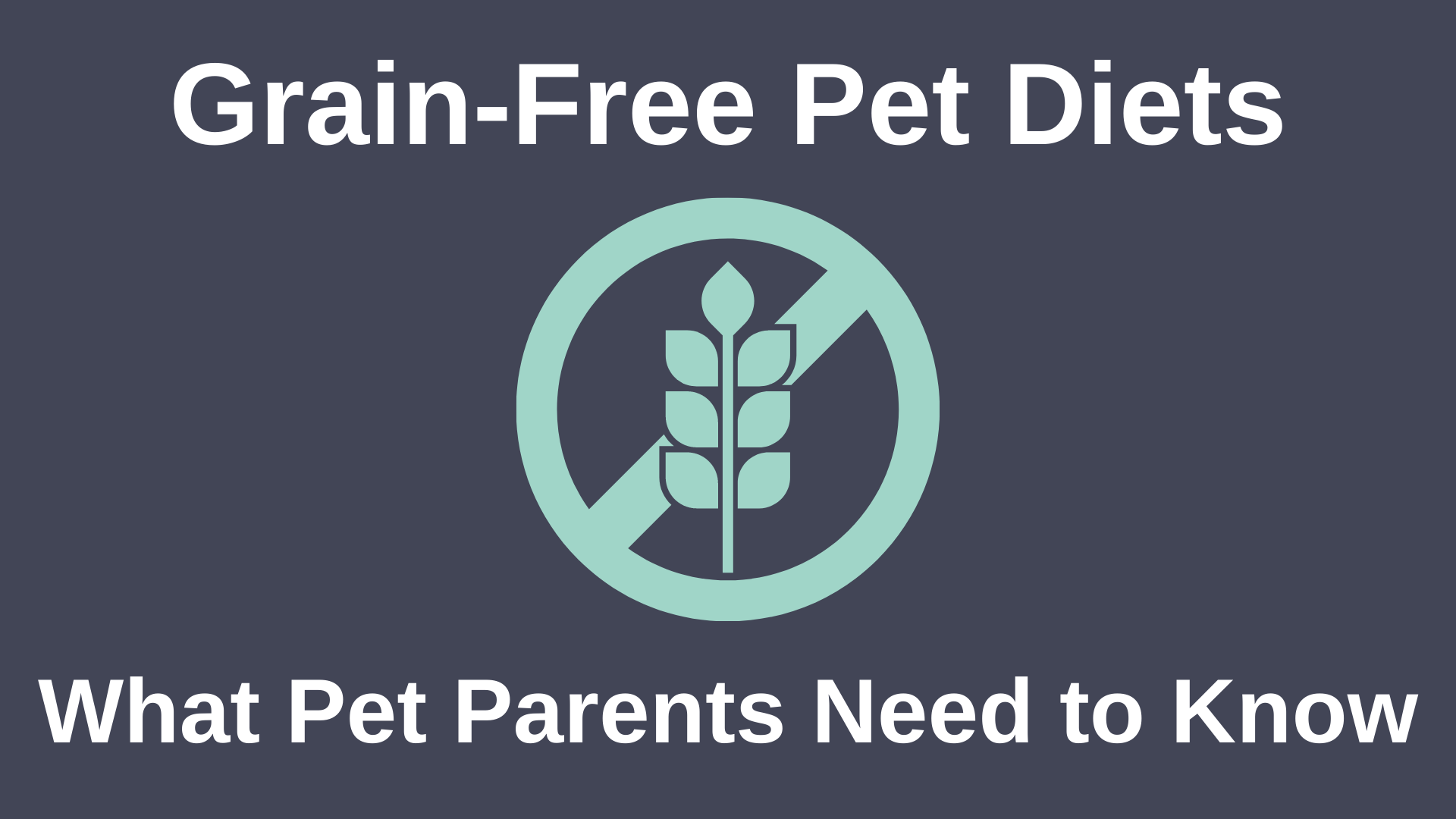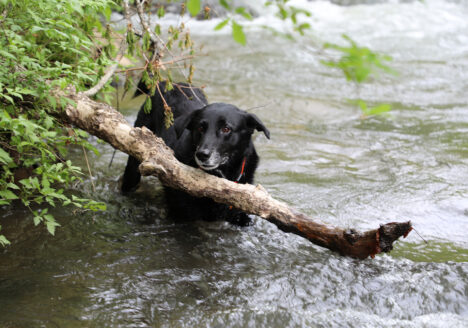Grain-Free Pet Diets: What Pet Parents Need to Know
 Veterinary Referral Center of Central Oregon’s own veterinary dermatologist, Dr. Jennifer Bentley, offered some background and information via our Facebook video series about the issues surrounding grain-free pet diets for cats and dogs. While the facts are not all in and research is ongoing, the bottom line is that grain-free pet food is more marketing strategy than vet-approved nutrition.
Veterinary Referral Center of Central Oregon’s own veterinary dermatologist, Dr. Jennifer Bentley, offered some background and information via our Facebook video series about the issues surrounding grain-free pet diets for cats and dogs. While the facts are not all in and research is ongoing, the bottom line is that grain-free pet food is more marketing strategy than vet-approved nutrition.
What’s the Problem with Grain-Free Pet Food?
There is no definitive answer, but there are some strong working theories. Over a year ago the FDA started investigating a link between a grain-free diet and DCM, or dilated cardiomyopathy. DCM is a disorder that manifests in the enlargement of the heart muscle. It is a serious canine and feline heart condition that can cause heart failure, as an enlarged heart is less able to pump blood efficiently. In the investigation, 90% of the 560 dogs afflicted with DCM had been on a grain-free diet.
Historically, certain dog breeds are genetically susceptible to DCM, such as Irish Wolfhounds, Dobermans, and Boxers. Many of the dogs in the FDA investigation were breeds not typically associated with DCM, including Labradors, Golden Retrievers, and Whippets. However, as Dr. Bentley pointed out, correlation does not always equal causation, and other factors can be at play. The veterinary research team at UC Davis recently conducted a study of 24 dogs with DCM who had been eating a grain-free diet. The dogs switched diets and were given a taurine supplement, and got better.
Wait Now, What’s Taurine?
Taurine is an essential amino acid. Cats do not produce taurine themselves. Once upon a time DCM was a much larger health problem for cats, but once taurine deficiency was discovered to be the problem, pet food manufacturers supplemented cat food with taurine, and now the condition is rare to nonexistent in cats.
Dogs do produce taurine. However, one theory is that a pet diet free from grain—including wheat, corn, and ancient grains such as quinoa—may include legumes such as lentils and peas. It may be that these legumes introduce enzymes that interact with other ingredients and possibly interfere with how dogs make and metabolize taurine.
DCM can be caused by a number of conditions. Genetics play a role, as well as diseases such as hypothyroidism.
So, How Did Grain-Free Pet Diets Become a Thing?
Grain-free pet food options have proliferated on the shelves. One reason may be that manufacturers are responding to human health concerns that do not bear on pet health. Here’s where the marketing comes in. Pet food labels can be manipulated to appeal to pet parents with words such as “Holistic,” “Organic,” and “Human-Grade.” In pet food terms, these terms have no meaning. “Natural” is the only regulated term. Also, ingredients that appear at the top of the list give the impression of being the most vital. Many pet parents don’t realize that ingredients are listed by weight. Components that have a good deal of water weight may be at the top of the ingredient list, but may actually play a much less significant role in providing nutrition.
Some pet food ingredients are associated with good human health, such as flaxseed, but do little to promote wellbeing in dogs and cats. Cats don’t have the enzyme to get the correct omegas out of flaxseed, and it’s not the best omega source for dogs. Dr. Bentley says she’s even seen ingredients that are toxic to dogs and cats, including garlic, on pet food labels.
While human consumers can be put off by the word “by-products,” many of these ingredients can be a great source of nutrients. Organ meats such as kidneys are considered by-products, and provide significant taurine. What sounds unappealing to humans can be good for your pet. Dr. Bentley offered a quote from a veterinary colleague: “Pets don’t need ingredients, they need nutrients.”
Lastly, many pet parents opt for a grain-free pet diet because they believe grains may be the source of allergies. In our article, “Myths and Truths About Grain Free Diets,” Dr. Bentley stresses that food allergies in pets are largely caused by a protein.
How to Choose a Diet for Your Pet
WSAVA Global Nutrition Community offers a comprehensive guide on how to select pet food. Here are the highlights:
- Does the pet food company employ the right staff? You want to see a PhD in animal nutrition and/or a someone board certified by the American College of Veterinary Nutrition (ACVA) or the European College of Veterinary Comparative Nutrition (ECVCN)
- You want the Association of American Feed Control Officials (AAFCO) (or the European equivalent) seal of approval for process
- Look for “complete diet,” calorie information, and an analysis of nutrients
- Make sure you can easily contact the company for more information
Talk to your veterinarian about your pet diet concerns for your dog or cat. At VRCCO, our veterinary specialists and staff are here to support pet parents with veterinary dermatology and allergy care, along with veterinary oncology, pet surgery, and advanced imaging for pets.


